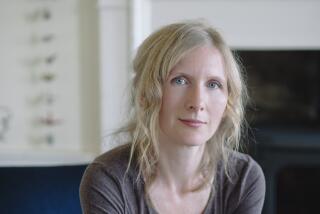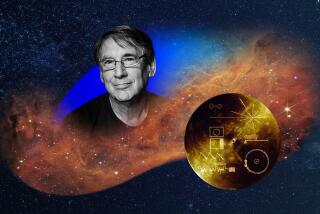NONFICTION - Aug. 8, 1993
THE EVENING STAR by Henry S.F. Cooper, Jr. (Farrar Straus Giroux: $22; 274 pp.) Cooper, a staff writer at the New Yorker for more than 25 years, and the author of several books on the stars and space exploration, turns his keen eye on the Magellan mission, in which one of the last unmanned spacecraft from the “classic era of planetary exploration--Pioneers and Mariners, Vikings and Voyagers,” has been mapping Venus from orbit since 1980 and returning scads of data to the Jet Propulsion Laboratory in Pasadena. By 1991, over 90% of the planet had been mapped, with formations named lovingly after famous women; Artemis, Cleopatra, Julia Ward Howe and Danilova (the ballerina). Craters smaller than 15 kilometers in diameter were simply given first names, such as Barbara, Ludmilla or Fatima.
Our nearest neighbor, located between the earth and the sun, Venus passes each year within 26 million miles of Earth. It is almost the same size as Earth (7,503 miles in diameter) and has long been thought to have been “Earth’s twin.” The temperature at the surface is 900-degrees Farenheit, the atmosphere is full of carbon-dioxide, and theories abound that Venus is in fact “the prototype for all our current fears about the greenhouse effect.” The question of whether we too will evolve to a “planetary autoclave” or even of why “Earth and Venus should have evolved in such different ways” is one of the underlying motivations for the Magellan mission. As the geologists and geophysicists involved try to explain the data they receive from the spacecraft to draw a picture of the planet’s topography, using the competing theories of plate tectonics and plume theory (sudden eruptions of hot rock through the mantle of a planet), Cooper explains the tensions between them with a characteristic sense of humor: “If Head (a geologist) reminded me of a thin slab of field stone, Phillips (a geophysicist) was more like a piece of basalt, a little chunkier . . . but with the same sharp edges.” In the end, Cooper likens the process to a square dance. “Unlikely combinations sashay down the aisle together. . . . Science is not an art. . . . Science may not even be a science. . . . What it most likely is, is a very human process for arriving at the closest approximation to the truth--as elusive an ideal, perhaps, as the last dance.”
More to Read
Sign up for our Book Club newsletter
Get the latest news, events and more from the Los Angeles Times Book Club, and help us get L.A. reading and talking.
You may occasionally receive promotional content from the Los Angeles Times.









